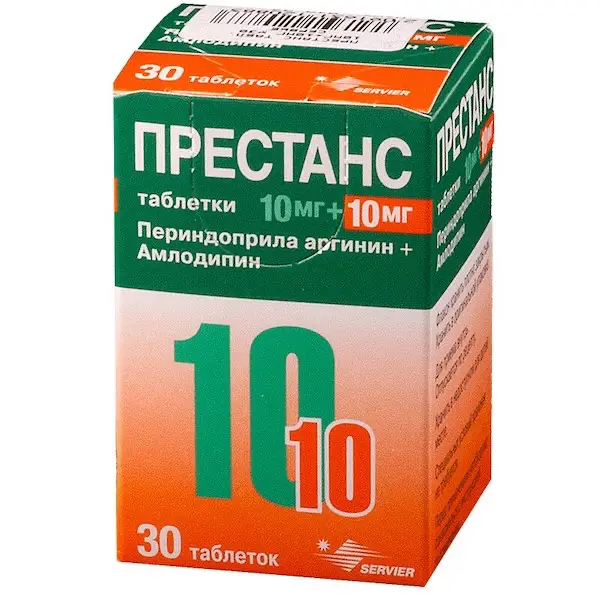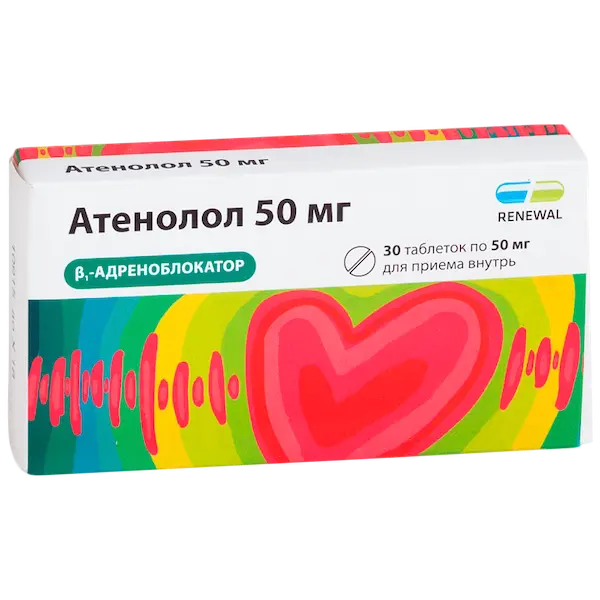Description
Prestans Pharmacodynamics
Perindopril
Perindopril is an inhibitor of the enzyme that converts angiotensin I to angiotensin II (ACE inhibitor). Angiotensin-converting enzyme, or kininase II, is an exopeptidase that both converts angiotensin I into the vasoconstrictor angiotensin II and breaks down bradykinin, which has a vasodilator effect, into an inactive heptapeptide.
ACE inhibition leads to a decrease in plasma angiotensin II concentration, which causes an increase in plasma renin activity (via a “negative feedback” mechanism) and a decrease in aldosterone secretion.
Since ACE inactivates bradykinin, ACE suppression is accompanied by an increase in both circulating and tissue kallikrein-kinin system activity, and the prostaglandin system is also activated. It is possible that this effect is part of the mechanism of antihypertensive action of ACE inhibitors, as well as the mechanism of development of some side effects of this class of drugs (e.g., cough).
Perindopril has a therapeutic effect due to the active metabolite, psrindoprilat. Other metabolites have no inhibitory effect on ACE in vitro.
Arterial hypertension.
Perindopril is a drug for the treatment of arterial hypertension of any severity. Against the background of its use, both systolic and diastolic blood pressure (BP) in “lying” and “standing” position are decreased.
Perindopril reduces total peripheral vascular resistance, which leads to a decrease in elevated BP and improvement of peripheral blood flow without changing heart rate (HR).
As a rule, perindopril administration increases renal blood flow, while glomerular filtration rate does not change.
Antihypertensive effect of the drug reaches a maximum of 4-6 hours after a single oral administration and lasts for 24 hours.
The antihypertensive effect 24 hours after a single oral administration is about 87-100% of the maximum antihypertensive effect.
Reduction of BP is achieved fairly quickly.
The therapeutic effect occurs in less than 1 month from the beginning of therapy and is not accompanied by tachyphylaxis. Termination of treatment does not cause the effect of “ricochet”. Perindopril has a vasodilator effect, helps to restore elasticity of large arteries and vascular wall structure of small arteries, as well as reduces left ventricular hypertrophy.
Stable coronary heart disease (CHD)
The efficacy of perindopril in patients (12218 patients over 18 years of age) with stable CHD without clinical symptoms of chronic heart failure was studied in a 4-year study. 90% of the study participants had previously undergone acute myocardial infarction and/or revascularization procedure.
Most patients received standard therapy in addition to the study drug, including antiaggregants, hypolipidemic agents, and beta-adrenoblockers. The combined endpoint including cardiovascular mortality, nonfatal myocardial infarction and/or cardiac arrest with successful resuscitation was chosen as the main efficacy criterion.
Therapy with perindopril tretbutylamine at a dose of 8 mg/day, once daily (equivalent to 10 mg of perindopril arginine) resulted in a significant absolute risk reduction for the combined endpoint of 1.9%, in patients who had previously undergone myocardial infarction and/or revascularization procedure, the absolute risk reduction was 2.2% compared to the placebo group.
Indications
Arterial hypertension and/or coronary heart disease (CHD): stable angina pectoris in patients requiring therapy with perindopril and amlodipine.
Contraindications
– Hypersensitivity to the active substances, other ACE inhibitors or dihydropyridine derivatives.
– Hypersensitivity to excipients included in the preparation.
– History of angioedema (Quincke’s edema) (including history of other ACE inhibitors).
– Hereditary/idiopathic angioedema.
– Pregnancy and breastfeeding (see section “Administration during pregnancy and breastfeeding”).
– Concomitant use with aliskiren and medicinal products containing aliskiren in patients with diabetes mellitus and/or moderate or severe renal dysfunction (glomerular filtration rate (GFR) < 60 ml/min/1.73 m2 body surface area) (see sections “Interaction with other medicinal products” and “Pharmacodynamics”).
– Concomitant use with angiotensin II receptor antagonists (ARA II) in patients with diabetic nephropathy (see section “Cautions”).
– Concomitant use with combined medicinal products containing sacubitril/valsartan (see sections “Interaction with other medicinal products” and “Cautions”).
– Extracorporeal therapy leading to blood contact with negatively charged surfaces (see section “Interaction with other medicinal products”).
– Severe bilateral stenosis of the renal arteries or stenosis of the artery of the only functioning kidney (see section “Special indications”).
– Severe arterial hypotension (systolic BP less than 90 mm Hg).
– Shock (including cardiogenic).
– Left ventricular outflow tract obstruction (e.g., pronounced aortic orifice stenosis).
– Hemodynamically unstable heart failure after acute myocardial infarction.
– Renal failure (creatinine clearance (CK) less than 60 ml/min).
– Childhood under 18 years of age (efficacy and safety have not been established).
– Hereditary galactose intolerance, lactase deficiency and glucose-galactose malabsorption.
Dosage and administration
- Orally, 1 tablet once a day, preferably in the morning before a meal.
- The dose of Prestans® is adjusted after previous titration of the doses of the individual drug components: perindopril and amlodipine in patients with arterial hypertension and/or coronary heart disease.
- If it is therapeutically necessary, the dose of the drug Prestans® may be changed or individual selection of doses of individual components may be performed beforehand.
- 5 mg perindopril + 5 mg amlodipine OR
- 5 mg perindopril + 10 mg amlodipine OR
- 10 mg perindopril + 5 mg amlodipine OR
- 10 mg perindopril + 10 mg amlodipine.
- Special patient groups
- Elderly patients and patients with renal impairment (see sections “Pharmacokinetics” and “Cautions”).
- Excretion of perindoprilat in elderly patients and patients with renal insufficiency is delayed. Therefore, plasma concentrations of creatinine and potassium in such patients should be regularly monitored.
- Prestans® may be administered in patients with a creatinine clearance (CK) equal to or greater than 60 ml/min.
- Prestans® is contraindicated in patients with a CK of less than 60 ml/min. (see section “Contraindications”). Individual selection of perindopril and amlodipine doses is recommended for such patients.
- Amlodipine, used in equivalent doses, is equally well tolerated by patients both elderly and younger patients. There is no need to change the dosing regimen in elderly patients, but the dose should be increased with caution due to age-related changes and increased T1/2.
- Changes in amlodipine plasma concentrations do not correlate with the severity of renal failure. Amlodipine is not excreted by dialysis.
- Patients with hepatic impairment (see sections “Dosage and administration” and “Cautions”)
- Dosage adjustment is necessary with caution in patients with mild to moderate hepatic insufficiency. It is recommended to start taking the drug at low doses (see sections “Dosage method and administration” and “Precautions”). Finding the optimal initial and maintenance dosage for patients with hepatic impairment should be done individually, using amlodipine and perindopril in monotherapy. Pharmacokinetics of amlodipine in patients with severe hepatic impairment has not been studied. For such patients, amlodipine administration should be started with the lowest dose and increased gradually.
- Children and adolescents
- Prestans® should not be administered in children and adolescents under 18 years of age due to the lack of data on the efficacy and safety of perindopril and amlodipine in these groups of patients as combined therapy.





